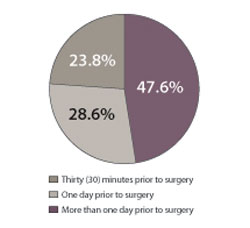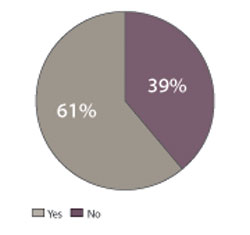Introducing the OSNE300 Survey
The OSNE300 Survey is a group of 300 European surgeons regularly polled for their opinions on hot topics in ophthalmology. The surveys will be sent monthly, 10 times a year, to those on the list. If you do not receive the survey and would like to be included, please contact Managing Editor Erin Boyle at eboyle@slackinc.com.
Do you start your patients on antibiotic drops prior to cataract surgery?

![]()
 Magda Rau |
 |
In the past, I have treated patients for the cataract surgery 1 week long with the antibiotic drops gentamicin or chloramphenicol. Sometimes patients developed [allergic conjunctivitis], so the operation had to be adjusted. This was a very negative aspect of the treatment. After the studies showed that the incidence of endophthalmitis does not significantly decrease after the preoperative prophylactic antibiotic treatment, I desisted from doing this. The studies showed that none of the antibiotic monotherapies are able to maintain the conjunctiva completely free of pathogen bacteria. The existence of polymicrobial flora decreases the effectiveness of the treatment. The other studies showed that preoperative skin disinfection with 10% povidone-iodine and conjunctival disinfection with 5% povidone-iodine significantly reduced the relative risk of postoperative endophthalmitis.
So we disinfect the skin and conjunctiva very accurately and irrigate the conjunctiva 30 seconds with 5% povidone-iodine.
— Magda Rau, MD
Cham,
Germany
Disclosure: Dr. Rau has no relevant financial disclosures.
How far in advance do you start your patients on these drops?

![]()
 Vikentia Katsanevaki |
Routine phacoemulsification and intraocular lens implantation is the most common elective surgical procedure undertaken in ophthalmology worldwide. Despite the European Society of Cataract and Refractive Surgeons’ recommendations in 2007, there is a wide variation in the use of prophylactic antibiotics of cataract patients.
 |
Preoperative use of antibiotic eye drops used from days to hours before surgery is routinely prescribed in many clinics worldwide. The value of these protocols in eyes without any preoperative inflammation before cataract surgery is not clearly shown in the literature.
My perioperative preparation is limited to 5% povidone-iodine drops instilled into the eye after scrubbing and before applying the eyelid drape.
During surgery, I use diluted vancomycin into the irrigation fluids (0.2 cc in 500 cc of balanced salt solution). In the conclusion of the procedure, I instill a combination of garamycin-celestoderm eye drops.
Postoperative treatment includes tapered dose of fluoroquinolone eye drops for 1 week and dexamethasone for 1 month.
— Vikentia Katsanevaki, MD, PhD
Athens,
Greece
Disclosure: Dr. Katsanevaki has no relevant financial disclosures.
Do you use intracameral cefuroxime prophylactically in cataract patients?

![]()
I use intracameral cefuroxime only after complicated cataract surgery or after surgery because of perforation trauma, to reduce the risk of the endophthalmitis.
— Magda Rau, MD
Cham, Germany

![]()
 Gabriel van Rij |
Acute endophthalmitis is a devastating complication of cataract surgery. Fortunately the incidence is very low. Because of this low rate it is extremely difficult to prove that one method of prophylaxis is more effective than any other. Unfortunately, good studies are rare.
 |
It is difficult to identify the source of infection with certainty. Usually, the most frequent source is the flora of the conjunctiva and eyelids. Therefore, prophylaxis should be aimed at reducing the number of bacteria on the conjuntiva and the eyelids.
Topical antibiotic eye drops will reduce the colony counts on the conjunctiva only. Because an ointment will reduce the colony counts both on the conjunctiva and the eyelid margins, we use tobramycin ointment the night before surgery in all our cataract patients.
— Gabriel van Rij, MD, PhD, and J. van
Rooij, MD
Rotterdam, Netherlands
Disclosures: Dr. Rau and Dr. van Rij
have no relevant financial disclosures.
